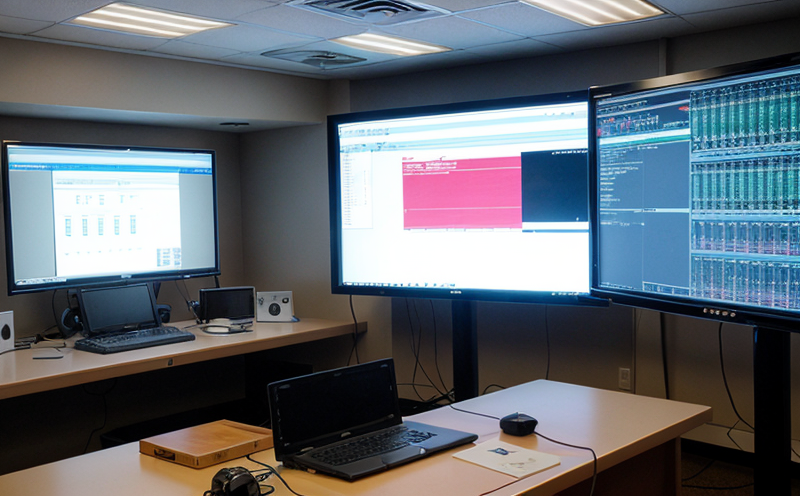IEC 62425 SIL Compliance Testing of Signaling Systems (Aligned with EN 50129)
The IEC 62425 standard is widely recognized for its comprehensive approach to ensuring the safety integrity level (SIL) compliance of signaling systems used in railway and transportation sectors. This standard aligns with EN 50129, which provides a framework for functional safety of signaling and interlocking systems in railways. The tests conducted under this standard are critical for verifying that the signaling system operates reliably, even when facing potential faults or failures.
The process involves rigorous testing to ensure that the signaling system meets the specified SIL requirements. This includes simulating various fault scenarios and monitoring how the system responds under these conditions. The goal is to validate that the system can maintain safe operations in all critical situations while minimizing risks associated with malfunctions.
Testing typically begins with a thorough understanding of the system's architecture and its interaction within the broader transportation network. This involves identifying potential failure modes, assessing their impact on safety, and determining appropriate countermeasures. The testing framework then focuses on evaluating the system’s ability to detect faults, isolate them, and continue functioning safely.
The test setup often includes a combination of hardware-in-the-loop (HIL) simulations and real-world scenarios where possible. HIL systems allow for controlled environments that mimic actual operating conditions without exposing the system to real hazards. Real-world testing may involve field trials or use of dedicated test tracks, depending on the specific requirements of the signaling system.
The testing criteria are stringent, ensuring that even minor deviations from expected behavior can be identified and addressed before deployment. Reporting must provide detailed insights into each test case, including results, observed behaviors, and recommendations for improvements if necessary. Compliance with IEC 62425 is crucial not only for regulatory adherence but also for enhancing public trust in the reliability of railway systems.
By adhering to these standards, transportation companies can ensure that their signaling systems are robust enough to handle unexpected situations without compromising safety. This level of assurance is paramount given the high stakes involved in rail operations. The meticulous nature of IEC 62425 testing underscores its importance in safeguarding lives and property.
For those responsible for quality management, compliance officers, R&D engineers, and procurement teams within the railway sector, understanding these tests can be instrumental in making informed decisions about system design and integration. It also highlights the significance of continuous improvement practices to maintain high standards of operational safety.
Why It Matters
The importance of IEC 62425 compliance cannot be overstated, especially in sectors like railway transportation where human lives and property are at stake. Ensuring that signaling systems meet the specified SIL levels helps prevent accidents caused by system failures or malfunctions. This standard provides a robust framework for assessing the safety integrity of these critical components.
Compliance with IEC 62425 aligns with broader efforts to enhance railway safety and reliability, which are essential goals in today’s increasingly connected world. By adhering to this standard, transportation companies can demonstrate their commitment to operational excellence and stakeholder trust. This not only reduces liability risks but also fosters a culture of continuous improvement within the organization.
The alignment with EN 50129 ensures that railway signaling systems meet international best practices in functional safety, thereby contributing to global standards for safety and reliability. This harmonization across different regions simplifies compliance processes while maintaining high-quality standards.
In summary, the significance of IEC 62425 cannot be underestimated. It serves as a benchmark for excellence in railway signaling systems, ensuring that these critical components are safe and reliable under all operational conditions.
Industry Applications
- Railway signaling systems
- Interoperable transportation networks
- Urban rail transit systems
- National railway networks
- High-speed train operations
The tests conducted under IEC 62425 are particularly relevant to railway signaling systems, which play a crucial role in ensuring the safe and efficient operation of trains. These systems must be capable of managing traffic flow, controlling speed limits, and providing warnings when necessary. By adhering to these standards, rail operators can enhance their ability to handle complex transportation networks that span multiple countries or regions.
In urban rail transit systems, where space is limited, precise control over train movements becomes even more critical. The tests help ensure that signaling systems operate seamlessly in densely populated areas while maintaining the highest levels of safety. For national railway networks and high-speed trains, compliance with IEC 62425 ensures consistent performance across vast distances, reducing risks associated with cross-border operations.
Environmental and Sustainability Contributions
- Reduces the risk of accidents due to signaling malfunctions
- Promotes efficient use of resources through optimized train schedules
- Minimizes emissions by ensuring smoother operations
The testing process for IEC 62425 not only enhances safety but also contributes positively to environmental sustainability. By reducing the likelihood of accidents, these systems help prevent derailments and other incidents that can lead to significant fuel waste and carbon emissions. Efficient scheduling facilitated by reliable signaling systems allows trains to operate at optimal speeds, conserving energy resources.
Furthermore, the robustness provided by IEC 62425 ensures that rail networks continue operating effectively even under challenging environmental conditions. This resilience supports sustainable transportation initiatives aimed at reducing dependency on less environmentally friendly modes of transport such as automobiles or airplanes.





